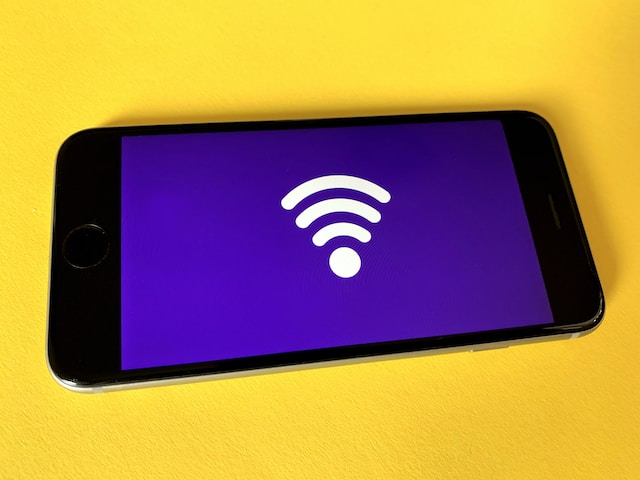
There is a growing consensus among scientists, governments, the TECH community, and citizens that global warming is real. Urgency is growing as we understand the necessity of a sustainable future. The Internet of Things (IoT) promises to become a powerful force of positive change. IoT connects everyday objects, devices, sensors, and the Internet to create a grand, interconnected network – a network of things.
IoT optimization means better resource utilization, waste reduction, and greater energy efficiency. IoT is where devices transfer data with other devices without humans. This article explores the transformative ability of IoT to build a viable future. We will explore how data-driven insight empowers businesses, governments, and individuals to take practical steps to create a new green world.
Environmental IoT Impacts
IoT advances need a rational appreciation of both positive and negative impacts. There are many practical action steps consumers and business owners can take.
Because IoT can monitor data analysis instantly, resource management dramatically improves. Some good examples are in agriculture, where deployed sensors monitor multiple variables to activate irrigation at optimal times, and farm IoT systems regulate energy demands for efficiency. Technicians need to embed sustainable practices that contribute to environmentally friendly outcomes. Goals center on improving energy efficiency and minimizing waste; embedding devices and sensors allow instantaneous monitoring and control.
Reducing emissions and waste adds value across all sectors. Homes and facilities can use IoT-connected devices to adjust lighting and temperature based on environmental conditions and occupancy. Also, IoT-connected vehicles can find shorter routes, be aware of current traffic patterns, and optimize engine performance for lower emissions. Thus, IoT lessens the carbon footprint.
Environmental protection monitoring is leaping forward with IoT. For humans, knowing air and water quality in real time is critical for environmental protection efforts. IoT sensors can monitor and analyze actionable data by networking with weather forecasting organizations and environmental sensors. In addition, wildlife and habitat monitoring will aid conservation efforts.
As environmentally sustainable IoT expands, practical steps need to take place. For example, Innovators must remain guarded with e-waste. Already, there are problems with recycling and disposal; the waste stream still needs improvement. E-waste pollution presents health hazards and lacks sustainability. Mitigation efforts need to improve dramatically.
Generally, energy consumption rises with every technological leap, and IoT will fundamentally change overall energy demands. Renewable energy must expand to meet growing demand, and energy efficiency must integrate across every device and sensor.
Lastly, there are privacy and security concerns that IoT will exasperate. The sheer massive amount of data harvested exposes all sectors to data leaks. Ethical data management must continually improve, and more robust security protocols must persistently move forward.
Pragmatic Investing in IoT and Sustainability
IoT is very reliant on wireless communication, so much so that it will place even greater pressure on sustainability in the near future. IoT sensors and devices depend on wireless communication like Wi-Fi and similar modes as well as over the Internet. With software and hardware, IoT technologies provide scalability, mobility, and communication flexibility across all environments and sectors.
Responsible and practical investing that prioritizes sustainability while adapting to increasing demand becomes essential. Modern societies are increasingly reliant on IoT wireless technology. Industry leaders must reconcile the significant impacts with the inevitable advances in IoT. Investors recognize opportunities in the development of environmentally friendly emerging wireless technologies.
More than simply reducing the carbon footprint, IoT leaders point to a dynamic, holistic approach. In the delivery chain, from factory floors to consumers, e-waste management, energy saving, and resource-efficient production must combine to increase sustainability. Investments in environmentally viable wireless technology will have positive outcomes for all stakeholders.
Practical IoT Efforts of the Future
Futurists use current trends to predict the near future and, from there, infer further outcomes. Glimpsing the future while appreciating IoT's drive toward sustainability means even more exciting innovations on an environmentally friendly and firm foundation. As technology matures, IoT will further integrate into our lives.
Artificial Intelligence (AI) will create highly personalized IoT for homes, industries, and public organizations. Predicting all outcomes with algorithms allows AI to use energy at maximum efficiency. For example, real time traffic data will aid autonomous vehicles in choosing routes and speeds at optimal efficiency.
Advances in distributed ledger technology, better known as blockchain, will allow for autonomous decentralized power grids. IoT sensors and devices enable automated peer-to-peer trading between power grids and renewable energy sources. Solar panels, geothermal power generation, dam turbines, and wind power will combine with traditional electric grids for maximum optimization.
Bio-integration with IoT sensors will seamlessly interact with the environment. In real time, valuable data for pollution control allows for quick action, identifying pollution sources, and finding actionable mitigations. Of great value is bio-integration in agriculture. Farms optimize by reacting to all possible variables for precision agriculture.
Sustainable innovations integrating IoT with other computing technologies are the future, but exact conceptualizations are impossible. The only thing known is what is on the horizon. Closed-loop manufacturing will improve with IoT optimizations for reuse, recycling, refurbishment, and energy efficiencies.
The Sustainable Path
The path to a sustainable future requires responsible consultants and practical action steps. IoT technology creates powerful tools, but there is much more ahead. The journey offers optimized environmental conditions, resource utilization, waste reduction, and more. But like all emergent technologies, IoT depends on greater levels of energy. As computing power grows, energy needs rise. Environmental IoT is the only path forward.
The future requires investing in environmental sustainability to maintain economies across the globe. Consultants with the needed experience to achieve IoT goals come with an Internet of Things service. The benefits of connectivity depend on uncompromising attention to energy efficiency, intelligent network management, renewable energy sources, waste management, and closing the manufacturing loop. The Internet of Things is the future of technology.











